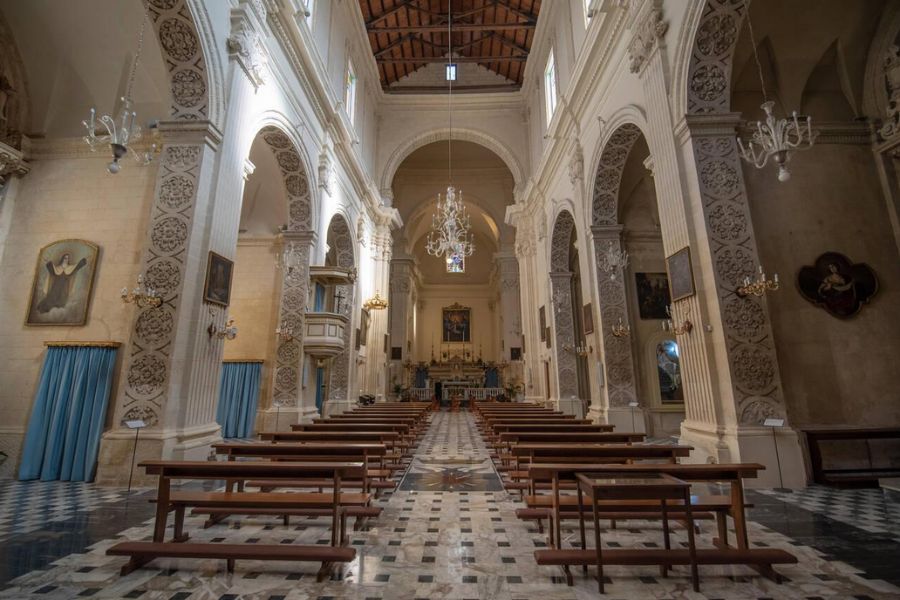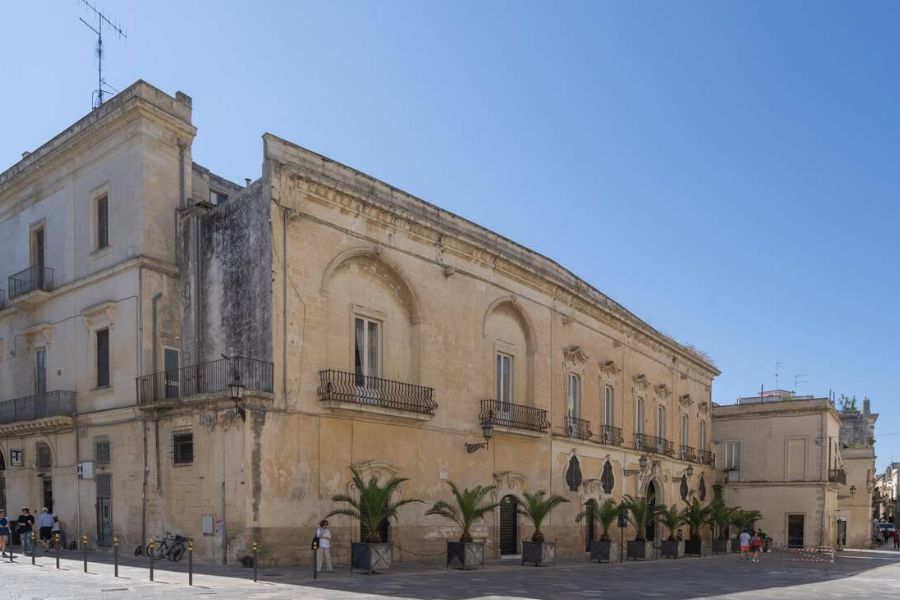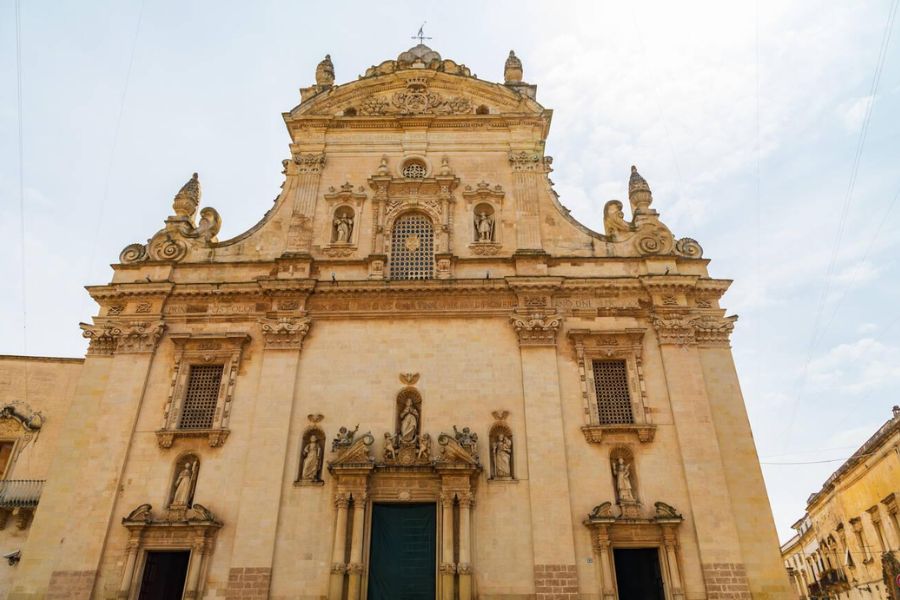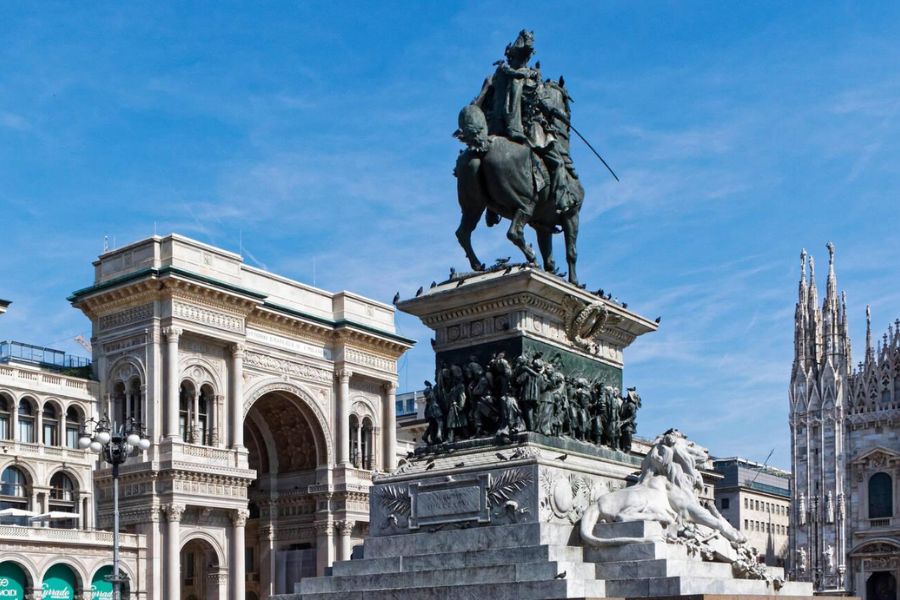Walking through Lecce feels like someone just let you in on a beautiful secret. Behind the city’s ornate Baroque façades, hidden courtyards and gardens wait quietly—most tourists never even notice them.
I found myself drifting toward these secluded spaces on my last visit. Golden limestone walls cradle quiet corners where you can escape the noisy piazzas.
What really sets Lecce apart is the way it tucks its best treasures just out of sight, almost daring you to look a little closer. The historic center doesn’t give up its secrets all at once. Winding cobbled streets sometimes open up to secret courtyards where local life unfolds away from the crowds.
Many of these spots hide behind plain doors—so easy to miss unless you know where to look.
My favorite memories in Puglia’s baroque gem came from wandering aimlessly. I’d follow locals down a narrow alley and suddenly stumble into a hidden church with jaw-dropping details or a courtyard where neighbors gathered in the cool evening air.

These moments gave me a peek into the real Lecce, the one you just can’t find if you’re racing between the big attractions.
Discovering Lecce’s Secret Courtyards
Behind Lecce’s grand Baroque facades, hidden worlds of calm and beauty lie waiting. These secret courtyards whisper stories from the city’s past and offer peaceful escapes from the busy streets.
Hidden Entrances in Baroque Backstreets
When I wander Lecce’s narrow lanes, I often pause at unremarkable doors that most people just walk past. Sometimes it’s a worn stone step or an old door knocker that hints at something special inside.
In the historic center, I’ve noticed the plainest doors often hide the loveliest courtyards. One favorite sits just off Via Palmieri—a simple wooden door opens to a garden with 18th-century stonework and potted citrus trees.
The local limestone, “pietra leccese,” glows warm and honeyed in these little spaces. Artisans used this soft stone to carve the intricate details you’ll spot on many courtyard walls.

Most of these hidden gems belong to private families. A few belong to B&Bs or restaurants, and if you ask, sometimes they’ll let you peek in.
Stories Behind Private Gardens
Every courtyard in Lecce seems to have its own story. Noble families in the 17th and 18th centuries built many of them, each trying to outdo the other with displays of taste and wealth.
Maria, whose family has tended their courtyard for six generations, invited me in one afternoon. She showed me faded marks on the wall where her ancestors measured their children’s heights. “This courtyard is our family album,” she said.
Some courtyards feature ancient Roman columns, reused when Lecce rebuilt itself centuries ago. Others show off clever old well systems that once watered entire neighborhoods.
The plants tell their own stories. Fig trees, jasmine, and bougainvillea create leafy canopies. Many residents still grow herbs and vegetables in terracotta pots, just like their grandparents did.
Local Legends and Everyday Life
These hidden spaces burst with stories if you listen. In a courtyard near Piazza Sant’Oronzo, locals point out a carving that marks where a soldier supposedly hid during medieval times.
I’ve ended up at spontaneous gatherings in these courtyards, sharing food and stories under twinkling string lights. One night, Paolo, an elderly neighbor, told me these spaces became communal kitchens in summer, when it got too hot to cook indoors.
Courtyards often serve practical purposes too. Some have sloped floors to collect rainwater, and others have windows placed just right for a cool breeze.

If you want to see these places, make friends with locals. Alessandra, who runs a tiny café, once drew me a map to five beautiful courtyards her friends would show me. “Just mention my name,” she said, “and bring flowers.”
Exploring Hidden Churches off the Tourist Trail
Lecce’s famous Basilica di Santa Croce draws the crowds, but the city hides spiritual treasures down quiet alleys and behind plain facades that most visitors totally miss.
Chiesa di San Matteo and Baroque Marvels
I stumbled onto Chiesa di San Matteo during a morning walk, just as the light hit its elliptical facade perfectly. Unlike the big-name churches, San Matteo stays peaceful—you might even have it to yourself.
The church’s unusual convex front makes a bold Baroque statement, designed by Gustavo Zimbalo in the late 1600s. Inside, I stood alone, taking in ornate altars and an impressive central dome.
What really caught my eye were the detailed stone carvings—Lecce’s soft limestone lets artists create flourishes that look impossibly delicate. If you look closely, you’ll notice hidden symbols: pomegranates for fertility, tiny angels peeking out from corners.
San Giovanni Battista: The Quiet Sanctuary
I found San Giovanni Battista church almost by accident, walking the narrow streets of the San Matteo district. Its plain exterior hides a calm, beautiful sanctuary.
Built in the 12th century and renovated later, the church blends Romanesque roots with Renaissance touches. The simple stone altar stands out against a richly decorated ceiling.
One afternoon, I watched an elderly woman light candles in a side chapel. She told me her family had prayed here for generations.

The baptismal font near the door dates to 1452, with delicate carvings that have survived centuries. I’d suggest visiting around 4pm, when sunlight streams in and fills the space with gold.
Frescoes, Chapels, and Forgotten Relics
Chiesa dei Santi Nicolò e Cataldo, just outside the center near the cemetery, hides some of Lecce’s most remarkable frescoes. Tancred of Sicily founded the church in 1180.
The side chapels display biblical scenes with colors that somehow still look fresh. I spent ages studying the faces—so expressive, and the hands almost seem to move.
If you’re lucky, the caretaker might unlock the sacristy’s reliquary, which holds artifacts rarely shown to the public.
The cloister attached to the church makes a great spot for reflection. I sat there with my journal, surrounded by columns carved with mythical beasts and plants. There’s a stone bench in the northwest corner that gives the best view of this architectural gem.
Architectural Curiosities and Secret Spots
Beyond the main sights, Lecce hides architectural surprises that most people miss. These corners reveal the city’s personality through quirky details, old symbols, and forgotten spaces.
Palazzo Intrigues and Hidden Symbols
I found Palazzo Marrese on one of my strolls. Its facade displays odd masks with wild expressions—locals say they ward off evil spirits.
The real magic is in the details. Look at the doorways of many palazzi and you’ll spot masonic symbols, cryptic religious codes, and family crests that hint at old stories.
Palazzo Adorno, dating to the 1500s, hides a courtyard with a secret garden that bursts into life in spring. The owner let me peek inside—Renaissance and Baroque elements blend together effortlessly.

Palazzo Bernardini stands out for its carvings of exotic creatures, supposedly brought back from distant travels.
Undiscovered Piazzas
Piazza del Duomo gets all the hype, but I much prefer Piazzetta Gabriele Riccardi. This tiny square has a forgotten fountain where students gather in the evening.
Piazzetta Santa Chiara, not far away, gives you a great view of the church’s octagonal bell tower. I like to bring my coffee here and sit on stone benches worn smooth by centuries.

Possibly my favorite spot is Piazzetta Falconieri, tucked behind an unremarkable archway. Its faded frescoes hint at medieval tournaments once held here. On summer nights, the square fills with residents escaping the heat.
The Mosaic Quilts of Lecce
Lecce’s lesser-known churches guard floor mosaics that form intricate stone quilts. The Church of Santa Maria della Porta mixes Christian and Arabic patterns.
The hidden chapel of San Marco amazed me—mosaic fragments from Byzantine times blend into newer designs, creating a patchwork of history under your feet.
The most stunning mosaic quilt lies in a private chapel on Via Palmieri. Sometimes the elderly owner lets visitors in if they knock politely. Inside, thousands of colored stones form images of local plants and animals—something you won’t see anywhere else.
These mosaic masterpieces are Lecce’s best-kept secret, connecting you to ancient craftsmen in a way that feels almost magical.
Unique Encounters in Museums and Parks
Lecce’s charm stretches beyond its Baroque facades. Intimate museums and peaceful parks offer some of the city’s most authentic experiences. They’re the perfect break from the busy center.
Intimate Museum Collections
I stumbled into Museo Faggiano while wandering backstreets. This family-run spot showcases 2,500 years of history found beneath a single home. The owners often share stories about the artifacts they dug up during renovations.
The MUST Museum fills a former monastery with contemporary art. Local Pugliese artists show alongside international names. I was especially struck by light installations playing off the ancient stone walls.

For something different, check out the Museo Ebraico. This tiny Jewish museum tells the story of Lecce’s once-thriving Jewish community. Ceremonial objects and old photos create a moving look at a part of the city’s past that often gets overlooked.
Serene Green Spaces Beyond the Guidebooks
Villa Comunale makes a peaceful retreat with big old trees and decorative fountains. I like to bring a book and sit by the central gazebo, where locals gather for afternoon chats. The garden’s layout hasn’t changed much since the 1800s.
For a wilder vibe, I’d go to Parco di Belloluogo on the city’s edge. This natural park has Mediterranean scrubland and ancient olive groves. The crumbling medieval towers look especially dramatic at sunset.
Orto Botanico is my personal favorite. The university runs this botanical garden, focusing on native Puglian plants. The cactus collection is surprisingly big, and the herb garden smells incredible.
Comparing Lecce’s Hidden Gems to Other Iconic Destinations
When I travel, I can’t help but compare new places to the classics. Lecce’s secret courtyards and hidden churches feel different—they offer something you just don’t get in the big-name cities.
Lecce vs Istanbul: Off-the-Beaten-Path Wonders
Istanbul dazzles with its grand mosques and busy bazaars. But Lecce gives you a quieter, more personal experience. In Istanbul’s Sultanahmet, you’re always in a crowd, but in Lecce, I’ve wandered empty streets and felt like I had the city to myself.
Both cities hide treasures, yet the vibe isn’t the same. Istanbul’s secret spots—like Çukurcuma’s antique shops or the Bulgarian St. Stephen’s Church—take effort to find among all the chaos. In Lecce, hidden courtyards seem like personal discoveries just steps from the main squares.

What I love about Lecce is how easy it is to stumble onto something special. No guide needed—just a bit of curiosity and a willingness to peek through open doors.
Southern Italian Charms Versus Other Polis Traditions
Southern Italian cities like Lecce grew up differently from the ancient Greek polis you find elsewhere around the Mediterranean. That gives them a character all their own.
Greek-influenced cities focus on big public spaces. Lecce’s baroque style, though, is all about private spaces that only reveal themselves if you’re curious.
I’ve noticed Lecce’s courtyard culture has something in common with places like Córdoba in Spain, where internal patios hide behind simple fronts. Both value privacy and create beauty on the inside.

The difference is in the feel. Lecce’s limestone sculptures and ornate facades have a warmth you just don’t get in the cool marble of classical cities. Wandering Lecce feels more like reading someone’s private diary than seeing a public monument.

